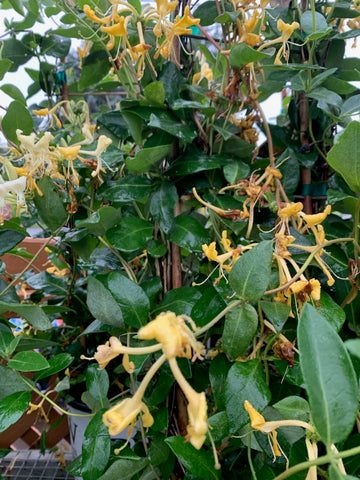Pollinators are essential to the ecosystem and, as everyone knows, they are in decline. Butterflies are part of the lot. Through your plant choices, you can help improve the situation.
Indeed, some plants attract butterflies more than others, here is a selection that you can find in our garden center.

Dill ( Anethum graveolens )
An annual plant known for its use as a kitchen aromatic, dill attracts bees and butterflies during its flowering. It needs exposure to the sun and moist, but well-drained and light soil.

Astilbe ( Astilbe spp. )
A perennial with a shrubby habit, loving exposure to the sun, but also able to grow in partial shade and shade, astilbe flowers in the form of feathery and downy spikes from July to September. Its foliage can be green or reddish and its flowers white, pink, red, lilac, etc., depending on the cultivars. Very interesting for use as cut flowers.

Baptisia ( Baptisia spp.)
A large perennial from the same family as lupins (often called false lupine), the baptisia has blue flowers in spikes and leaves with three rounded leaflets. It flowers in June and July. It tolerates dry soils, but thrives best with a little compost. It is one of the plants spared by deer and marmots!

Cornflower ( Vaccinium angustifolium )
A small fruit shrub, requiring exposure to sun or partial shade and acidic soil, the cornflower attracts pollinators and is an excellent honey plant. For a better yield, it is recommended to plant two different species, even for so-called self-fertile plants.

David's Buddleia ( Buddleia davidii )
Nicknamed the butterfly bush, Buddleia is a shrub producing purple flowers. Forming a generous bush and having abundant flowering from July to September. In addition to attracting butterflies, it also attracts hummingbirds. It likes exposure to sun or partial shade.

Nasturtium ( Tropaeolum majus )
A full sun annual plant with edible flowers, the nasturtium has round leaves that appear to be floating and flowers ranging from yellow to red. Some varieties have variegated foliage. It can be used in pots or hanging baskets.

Honeysuckle ( Lonicera spp. )
Vigorous, very decorative climbing plant, easy to grow, with very fragrant flowering. The rounded tubular or bell-shaped flowers are particularly popular with butterflies. Honeysuckle tolerates sun, but prefers partial shade and rich, fertile, well-drained soil.

Coreopsis ( Coreopsis spp.)
Requiring a lot of sun, the coreopsis is perennial and can remain in flower almost all summer if the spent flowers are removed. Deer have little interest in them, but on the other hand, pollinating insects frequent them a lot and their seeds can feed birds in winter.

Coneflower ( Echinacea purpurea )
There are several cultivars of echinacea, which come in different sizes and colors (white, yellow, pink, red, orange). Their long flowering, which can last from mid-July to mid-September, is spectacular. Their corymbs are a perfect landing pad for butterflies. Very hardy and drought tolerant, they like full sun and do not require much maintenance.

Lantana ( Lantana camara )
Annual plant offering abundant flowering in bright colors (white, yellow, pink, orange, red) with florets that can be plain or multi-colored. Versatile, lantana can be used in a container, in a flower bed and also in a hanging basket. Renowned for its excellent resistance to heat, it likes the sun and a soil that is drier than humid. Plant of choice for creating a paradise for pollinators, with its sweet and abundant nectar.

True lavender ( Lavender angustifolia )
A very fragrant perennial, lavender likes to be in full sun and in a well-draining substrate. The heat favors its flowering, which generally occurs in July to August. It can be used as an infusion as a medicinal plant to relieve headaches.

Frutescent cinquefoil ( Potentilla fruticosa )
A shrub with a small bushy habit, the cinquefoil has a long flowering, which can be white, yellow, orange, pink or red, and which can last from June to September. It likes well-drained soil and is easy to grow, tolerant of poor soils.

Rudbeckia ( Rudbeckia spp .)
Rudbeckias have the same needs as echinaceas and are just as easy to care for. Their flowering is long, easily lasting from June to September. There are annual and perennial varieties and colors vary depending on the cultivar.



